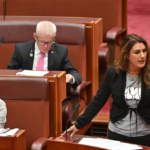Buying local the key to sustainable purchasing
Buying Australian products is becoming increasingly important to Australian consumers. Ian Harrison, Chief Executive of the Australian Made Campaign, explains how you can be sure that the product you are buying is really Australian.
Australians are becoming more aware of the importance and benefits of sustainable living, which includes sustainable purchasing.
Buying local is important for a number of reasons, not least of which is the positive impact on the environment by way of a reduction in food mileage. One of Australia’s great strengths is the stringent standards that our manufacturers, producers and processors must comply with to legally sell their products here. Australia has some of the strictest regulations in the world, so when you purchase products made and grown in Australia you can be sure it has been manufactured and grown in accordance with high quality, health and safety regulations. Buying local also equates to jobs for Australian people and positive flow-on effects for the wider community and economy — and that’s got to be a good thing.
Recently released research from the Australian Made Campaign revealed that buying Australian-made products has become more important to Australian consumers. According to the findings, buying Australian-made matters more to us now than it did a year ago, and we regularly buy local, even if it comes at a cost.*
This indicates that people are becoming aware of the benefits of buying Aussie products, and of the impact that their purchasing behaviour has on jobs, local business and future opportunities.
The easiest way to identify local products is to look for the green-and-gold Australian Made, Australian Grown (AMAG) logo.
The AMAG logo is Australia’s registered certification trade mark for genuine Aussie products and produce. The famous stylised kangaroo was introduced by the Federal Government in 1986 and is now promoted and administered by the not-for-profit Australian Made Campaign Limited. Most Australian consumers (98 per cent) recognise the logo, and it is the AMAG logo that gives the vast majority (88 per cent) strong confidence that a product is Australian.
The Australian Made Campaign recently launched its new website to help consumers find genuine Australian products and produce.
Featuring more than 10,000 products from thousands of Australian manufacturers, processors and producers, the Australian Made website enables consumers to quickly and easily find locally made, grown or caught products. The website only features genuine Aussie products that have been certified to carry the AMAG logo.
When consumers buy Australian Made and Australian Grown, they’re getting great quality, but they’re also reinvesting back into the local community, contributing to a more sustainable Australian economy.
How can you tell if the product you are purchasing is genuinely Aussie?
Look for the green-and-gold kangaroo logo with one of the following five descriptors:
Australian Made:

- The product is substantially transformed in Australia i.e. the final manufacturing process must take place here
- 50% or more of the cost of product is incurred in Australia
Product of Australia:

- All of the product’s significant ingredients come from Australia
- All, or nearly all of the manufacturing or processing is carried out in Australia
Australian Grown:

- All of the product’s significant ingredients are grown in Australia
- All, or nearly all of the processing is carried out in Australia
Where a product contains some (but not much) imported component, a qualified claim is available. The AMAG Code of Practice sets out stringent conditions for use of the qualified claim, to ensure that the product is almost entirely Australian.
Australian Seafood:

- All of the product’s significant ingredients are grown/harvested in Australia
- All, or nearly all, of the processing is carried out in Australia
Australian:

- The product must satisfy the criteria for at least one of the four preceding claims, and cannot be misleading.
- Can only be used in export markets.
*Roy Morgan 2013:
- More than half of the respondents surveyed (55%) said that buying Australian-made had become more important to them in the last 12 months.
- Just one tenth of the respondents (12%) said that they would not buy Australian products if they were more expensive.
Ian Harrison joined Australian Made Campaign Ltd (AMCL) as its Chief Executive in June 2004. Prior to this, Ian’s career involved senior executive positions with employer organisations at state and national levels, with a principal focus on policy and economics. During this time he was Chair of the SA Accreditation and Registration Council. Before joining AMCL he was for 5 years the Chief Executive of SA Business Vision 2010 Inc, a joint initiative of business, Government, educationalists and community groups in SA to increase the future prosperity of that State. During Harrison’s time with AMCL, the Australian Made, Australian Grown logo has been promoted as the global product symbol of Australia. Over the past 8 years, since moving the office from Canberra to Melbourne, the campaign has grown strongly in the domestic market and the logo has been central to a major export program, implemented with the support of the federal Government. Ian holds a degree in economics, enjoys football and cricket, and is married with 3 children.












